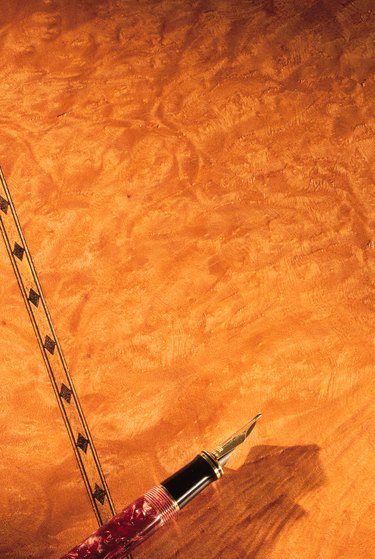
Leather can be a difficult material to work with in arts and crafts projects. Depending on what type of leather you use and how thick the sample is, it may be a task to manipulate it into the right size and shape for your needs. This is particularly true when trying to re-cover an object with a new piece of leather. Skiving is the process of thinning a piece of leather so it's easier to handle. With a couple of tools, you can thin your leather down the thickness you need for your project.
Step 1
Choose the appropriate tool for the job. Some people have special tools for repairing leather, such as a McKay knife. Others find that any sharp utility blade will work. Whatever type of blade you use, make sure it is extremely sharp. Place the leather face down, with the fleshy side up.
Video of the Day
Step 2
Hold the leather firmly down on a hard and clean surface such as granite. Choose a work surface that is smooth and cannot be damaged if your blade slips and cuts into it. Hold the blade at a low angle with the tip against the edge of the leather. Slice in a fluid motion to bevel the edge of the leather.
Step 3
Bevel the edge of the leather more if you desire. Make more slices until you get the desired thickness. Check the blade periodically to make sure it is still as sharp as possible. If the blade has dulled, replace it with a new one to prevent tearing of the leather.
Step 4
Skive the entire piece of leather to match the thickness you have achieved. Keep the blade at a steady angle. Hold the blade at a lower angle to skive more thinly, or hold it at a higher angle to take off a thicker layer. Keep a firm grip on the leather with your free hand as you work.
Tip
Try both a straight blade and a curved blade to see which works better for your project.
Warning
Be careful when working with extremely sharp blades.
Video of the Day